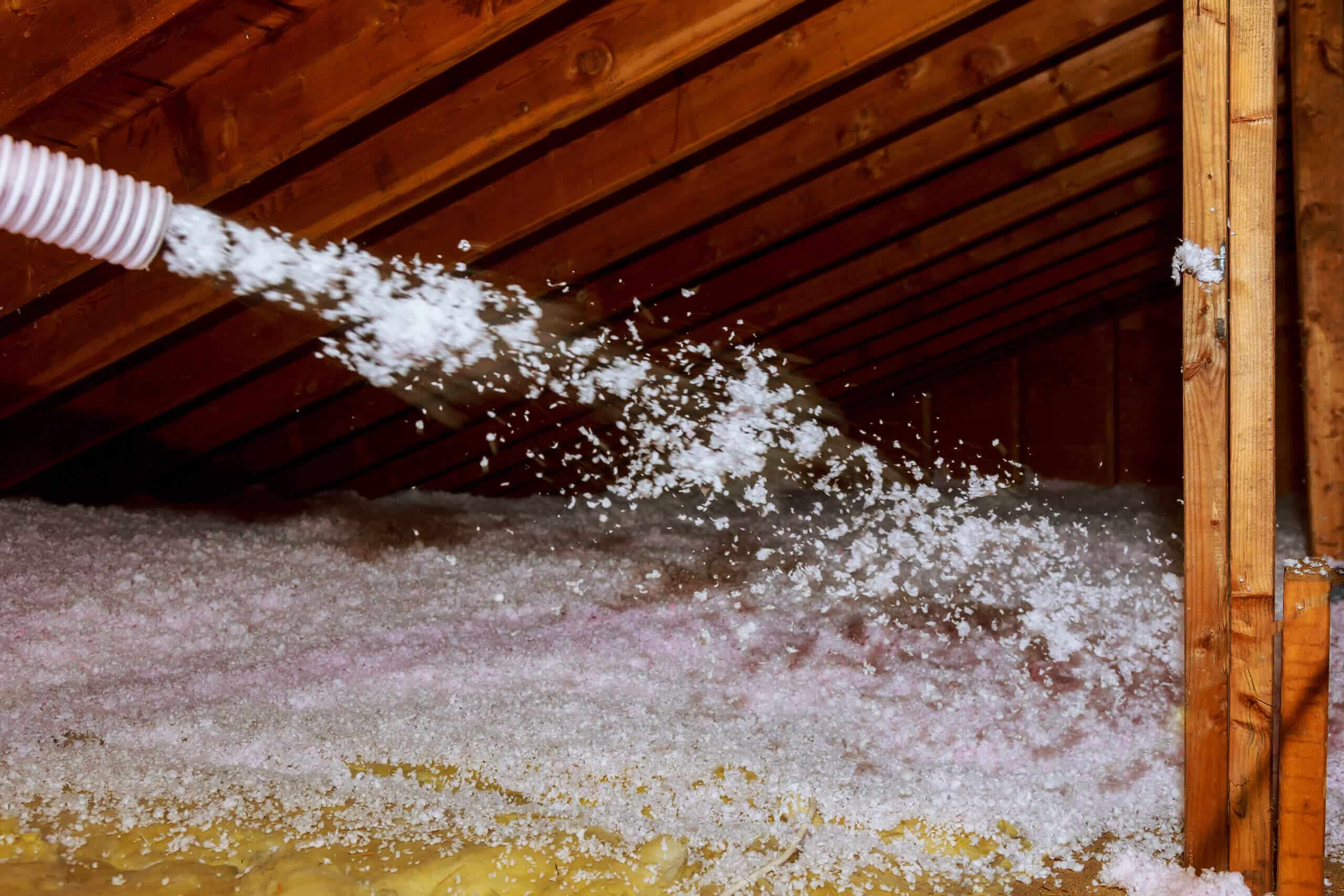You may wonder how to insulate an attic for your next home improvement project. Insulation in your attic keeps cold air in during the summer and warm air in during the winter. Contractors with industry experience know how to properly insulate an attic, and you can too with this guide.
Things to Consider Before Attic Insulation
Before you learn how to insulate an attic, there are necessary things to consider. First, you should address whether your attic is finished or unfinished. Will you use your attic as a living space, or are you insulating it to save money on your energy bills? Answering this question determines how to go about the process.
You should consider:
- Your budget
- If you plan to DIY or hire a contractor
- How you utilize your attic
- Which material to use
Before insulating, you should take preventative steps to ensure that the insulation is as thorough as possible. Seal all air leaks around chimneys, ducts, exhaust fans, flues, pipes, windows, and wires. Box off fans to prevent insulation from touching them, and resolve any roof leaks before beginning.

When to Insulate an Attic
During the winter months, you already want protection from the bitter cold, so insulating is not ideal at this time of year. Hot summer months can also make working in a hot, un-air-conditioned attic unsafe, so the best time to insulate your attic is between the end of summer and early fall. However, this suggestion can vary based on the climate and region you live.
Types of Attic Insulation
When considering insulation types, a critical factor is the material’s R-value. R-value simply means how well the insulation resists heat. R-value is measured per inch, and higher R-values mean more effective insulation. There are a few popular types of attic insulation you can choose from, with pros and cons for all, including:
Fiberglass Batt Attic Insulation
This type of insulation requires little effort from whoever installs it and is often the most affordable. However, fiberglass batt provides homes with the least effective insulation and is not the first choice. However, you can purchase it in large amounts at the store in bundles, and it’s easy to install.
Pros:
- Easy to replace and remove
- Requires no professional assistance
Cons:
- You must physically bring all materials up to the attic
- You must meticulously avoid obstructions
Cellulose Attic Insulation
Cellulose insulation offers more protection than batt insulation but can lead to dust in the air. You (or the professional installing any insulation type) should always wear a mask and proper protective gear to protect yourself. Cellulose is fantastic for combatting air movement and frost within an attic. It is considered one of the best insulation choices, but spray foam tops it in terms of R-value.
Loose-Fill Fiberglass Attic Insulation
Loose-fill fiberglass is similar to cellulose in that you must blow it into the attic through a machine. It can be a good option to go with when you’re learning how to insulate an attic roof. Many new construction projects use cellulose, but it is difficult to install and spread by yourself.
Spray Foam Attic Insulation
Most professionals use spray foam insulation. The two common types are closed and unclosed, and they can fill difficult areas that blanket insulation cannot as easily.
Installation requires a spray foam gun, but only a professional should attempt the task. People consider spray foam an expensive type of attic insulation, but it pays off in the long run by saving you money and improving your attic space.
How Much Does It Cost to Insulate an Attic?
You have decided to insulate your attic and are ready to take the next step, but still, you might wonder, “How much does it cost to insulate an attic?” There is no way to get an exact price until you compile the following factors and obtain a consultation from a professional:
- Total square footage of attic
- Cost and type of materials
- Electrical work needed (if applicable)
- Cost of contractor’s time and labor
FAQs: Attic Inspection
What Type of Insulation is Best for the Attic?
Spray foam is the best type of insulation for the attic because it offers no heat transfer and has R-values between R3.6 and 6.5 sq. inch. The closed-cell kind also provides the benefit of a moisture barrier. Other types of insulation are more budget-friendly but don’t offer the same effectiveness.
Does Insulation in the Attic Really Help?
The attic is the area in your house where the most amount of air loss occurs. Hot or cold air can escape through crevices and gaps in an attic, preventing effective insulation and causing high energy bills.
Is it Better to Insulate the Attic Ceiling or Floor?
The choice to insulate the attic ceiling or floors depends on if your attic is finished or unfinished. If you have a finished attic, it is best to focus on the attic ceiling to keep the used space warm and cold at the appropriate time of year. As for an unfinished attic, it is best to insulate floors since you are trying to protect the spaces below.
Conclusions
Contact our team of professionals to get the job done correctly now that you’ve learned how to insulate an attic roof and rafters. At Attic Projects, we uphold our name and can tackle any project in your attic, big or small. Insulation can help save you money and protection against harsh temperatures, and trying it yourself won’t yield the same money-saving and long-lasting results.
We offer senior, military, share the love, and flexible date discounts and can provide custom estimates for our services. You can also fill out our convenient online form with your information, and one of our team members will get back to you shortly.
Call Attic Projects in San Diego or Orange County/Los Angeles for a free attic inspection. We hope to have helped you answer how to insulate an attic and that we will become your go-to attic project business.
Recommended Article: How To Remove Thick Dust From Your Attic




